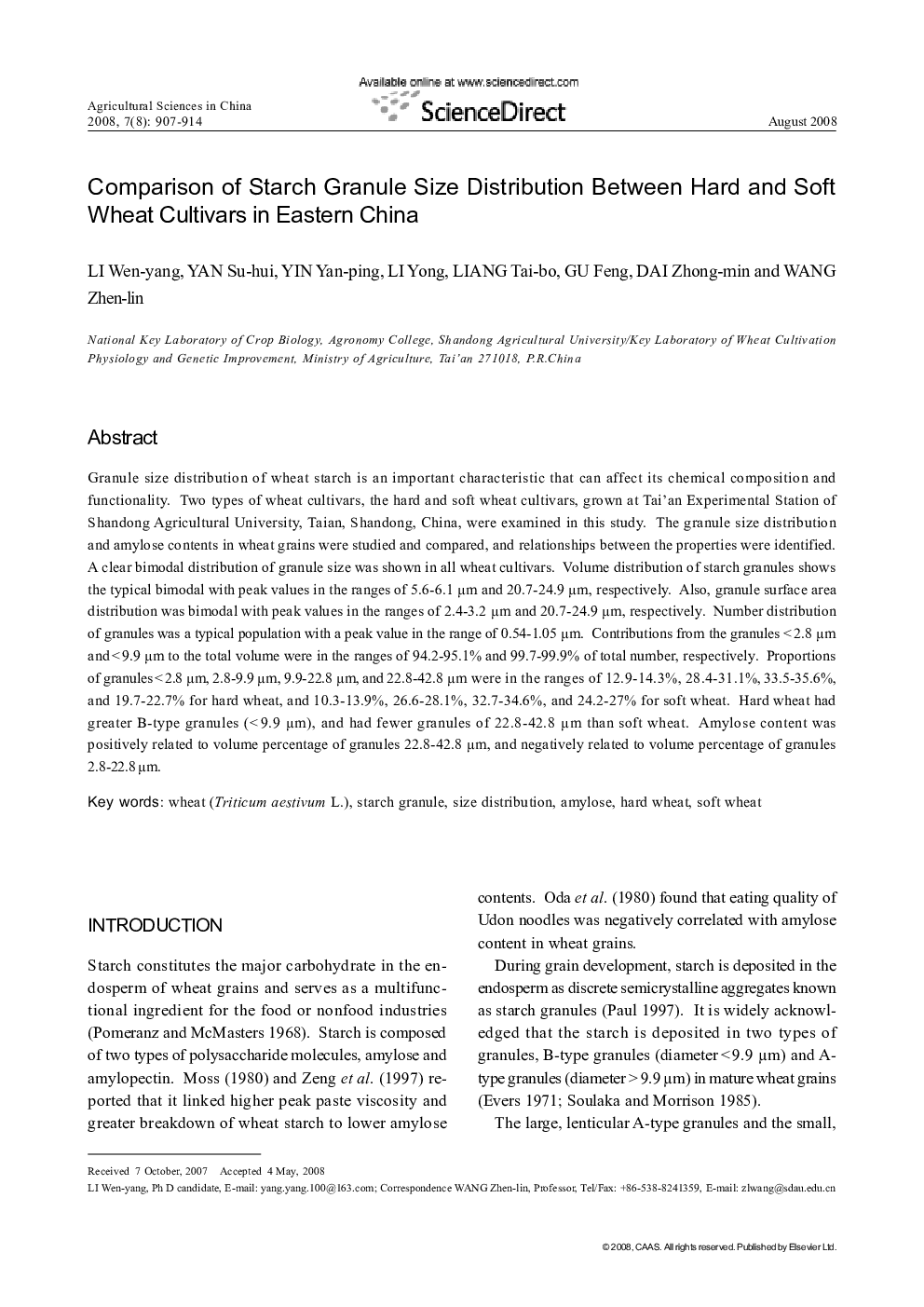| Article ID | Journal | Published Year | Pages | File Type |
|---|---|---|---|---|
| 4490632 | Agricultural Sciences in China | 2008 | 8 Pages |
Granule size distribution of wheat starch is an important characteristic that can affect its chemical composition and functionality. Two types of wheat cultivars, the hard and soft wheat cultivars, grown at Tai'an Experimental Station of Shandong Agricultural University, Taian, Shandong, China, were examined in this study. The granule size distribution and amylose contents in wheat grains were studied and compared, and relationships between the properties were identified. A clear bimodal distribution of granule size was shown in all wheat cultivars. Volume distribution of starch granules shows the typical bimodal with peak values in the ranges of 5.6-6.1 μm and 20.7-24.9 μm, respectively. Also, granule surface area distribution was bimodal with peak values in the ranges of 2.4-3.2 μm and 20.7-24.9 μm, respectively. Number distribution of granules was a typical population with a peak value in the range of 0.54-1.05 μm. Contributions from the granules < 2.8 μm and < 9.9 μm to the total volume were in the ranges of 94.2-95.1% and 99.7-99.9% of total number, respectively. Proportions of granules < 2.8 μm, 2.8-9.9 μm, 9.9-22.8 μm, and 22.8-42.8 μm were in the ranges of 12.9-14.3%, 28.4-31.1%, 33.5-35.6%, and 19.7-22.7% for hard wheat, and 10.3-13.9%, 26.6-28.1%, 32.7-34.6%, and 24.2-27% for soft wheat. Hard wheat had greater B-type granules (< 9.9 μm), and had fewer granules of 22.8-42.8 μm than soft wheat. Amylose content was positively related to volume percentage of granules 22.8-42.8 μm, and negatively related to volume percentage of granules 2.8-22.8 μm.
